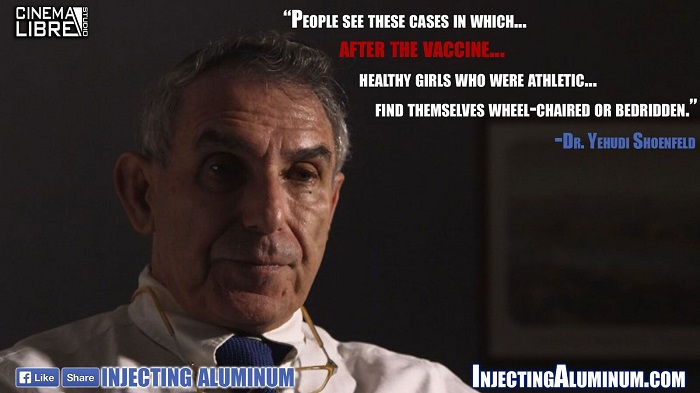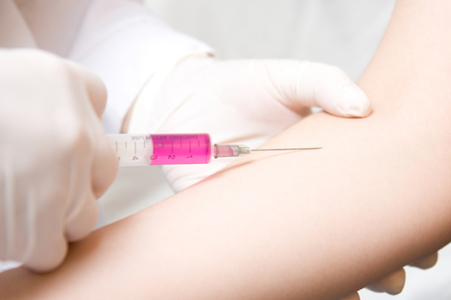Of Peanut Allergies and Petulance
A few weeks ago, a fellow social media acquaintance posted an article about peanut allergies in children. The article argued that no peanut butter sandwich is as important as a child’s life, so she urged her fellow moms not to bring peanut items to school if a classmate had a known peanut allergy. I read it: it was heartfelt and very sensible. I am of the opinion that my daughter can certainly live without peanut butter sandwiches at school. Her school is nut free, and never once has it inconvenienced me in the slightest. When I found out about the nut-free rule, my first thought was “Wow. I’m so glad that I do not have to worry about my daughter encountering such a dangerous allergy situation all the time–that must be really hard for those parents.” Apparently, that’s not such a common response. Read any of these articles on moms talking about peanut allergies and you will find comments from parents reacting in ways that range from annoyed to down-right cruel. Parents protesting that “Kids should learn to navigate their allergies in the real world” and “My child won’t eat anything else!” This poor mother is sitting there having to worry about one sticky peanut butter finger touching a door knob and her small child dying in a matter of minutes from anaphylaxis after touching that door knob. Think about that for a second: HAVING TO WORRY THAT YOUR CHILD WILL DIE EVERY SINGLE DAY AT SCHOOL FROM PEANUT BUTTER. Thinking about that is enough to make my heart bust open with torturous sadness for that parent. The lack of empathy in those responses was astounding. In some cases, down right sociopathic.
You may be on board with the peanut butter argument, agreeing that we should have empathy for children with peanut allergies. Those kids didn’t choose their allergies, and their parents have to worry that their children will die from a product that is nearly ubiquitous in our existence. You may be one of the parents that gets that, and that’s great. But the conversation took an even darker turn, and that is what I want to really talk about in this article. One respondent wrote something to the effect of, “Why do we just have to worry about peanut butter sandwiches when there are stupid, irresponsible parents who let their child come to school unvaccinated and put our children at risk of death every day.” If you’ve read this article, you can imagine that struck a nerve with me. Although I feel like my response to that comment was both warranted and respectful, it never does any good but open Pandora’s Box, leaving me tired, discouraged, helpless and hopeless. WHY? Lack of empathy.
Vaccine Vitriol: A Pattern of Predictable Disdain
There’s a group of people in our society that is marginalized beyond belief in the most cruel and unusual ways: vaccine injured children and their families. Now before you stop reading, thinking I am some crazy “anti-vaxxer” about to do some “pro-vaxxer” bashing, please know that is not going to happen here. In fact, I am attempting to do exactly the opposite. The vaccine argument is one of the most contentious and heated debates I’ve ever seen. I’d be willing to go out on a limb and say it is worse than probably any other political issue to date: even more so than gun control or immigration.
In any vaccine discussion, it is common for phrases like “you should have your kids taken away and go to jail” and “you’re an idiot who believes in pseudoscience” to fly around the conversation. To be honest, there’s a lot of self-righteousness and indignation sometimes on both sides of the issue. So what is going on here? Why can’t we have a civil conversation about vaccines, like, EVER?
Well, I’m a psychologist, so all the obvious answers (to me) ran through my head: cognitive dissonance, belief perseverance, etc. Yes, it’s well documented in psychological science that people cling tight to their beliefs even in the face of overwhelming contradictory evidence, but these things don’t really account for why people can be so darn MEAN to each other in the process. Then (as I usually do), I started ruminating on how, at some level, every single thing that human beings do is explained by consciousness. Human beings are a product of their minds, and our minds are set up to run in very predictable ways. Human brains are pattern seekers; they constantly put things into groups or categories. Every piece of stimulus information we encounter (what we see, hear, touch, feel, taste), is organized in the brain in a way that helps us put things into logical order.
Information is stored in our long term memory in something called a semantic network, where similar pieces of information remain connected together in our brains. We create schemas, which are “templates” for objects and situations that become stored in our memory. These things help us predict and anticipate things we will encounter in the future. In other words, these processes help us navigate a world filled with overwhelming amounts of stimulus information. Usually, this works pretty well for getting around this complex world, except that life is not black and white, and dealing with the gray areas require much more effortful processing.
What does this have to do with meanness and lack of empathy? If our minds are naturally inclined to place things into groups, then that’s part of the reason that it’s so easy to cling to dualistic thought: right vs. wrong, bad vs. good, in-group vs. out-group, winner vs. loser. Not only are our brains pattern seekers, but we’re also social animals that seek out similar others. Both of these things help create a large “us” vs. “them” dynamic. Psychological science has also shown that we tend to have more empathy for those who are similar to us than dissimilar. In other words, when “us” encounters “them”, our brains are more inhibited from producing empathetic responses. Moreover, the anger that arises from our values being challenged activates our amygdala (our brain’s alarm system) which competes against our pre-frontal cortex (involved in self-control and rational thought). Combine all of that with the deindividuation (loss of self-awareness in a group) of the social media environment, and you’ve got a recipe for cruelty and indignation.
Beyond Us Versus Them in the Vaccine Debate: Empathy First
How can we unravel these barriers when it comes to the vaccine argument? One word (here it is again): Empathy. No, it’s not the dominant response in this situation, but research has also shown that we can call upon our executive functions like self-control and exert them upon will. It’s tough, and it depletes us when we do it, but it can be done. We need to approach these conversations by first trying to willfully control our immediate anger that results from confronting information that challenges our beliefs. Yes, that challenge is uncomfortable, but by taking a few minutes to let your mid-brain calm down and execute willful self-control, you’ll be better prepared to try to understand the other side of the argument.
One very smart commenter in that social media conversation, who was actually the first person to acknowledge that maybe I wasn’t crazy after all for speaking out against vaccinations, suggested that instead of eliciting anger and defensiveness, attempting to induce empathy with rational thought might be a better strategy. She suggested asking yourself, “Why would someone choose not to vaccinate their child?” or “Why would someone want to force everyone to vaccinate when they know some children have been injured by vaccines?” If you’ve really been able to put your anger aside (at least temporarily) then you’ll realize the answer to both questions is exactly the same: They want healthy children. Suddenly, it’s not “us” versus “them” anymore, it’s just “us”. We all want the same thing, we just have vastly different feelings about how to accomplish it.
This person also made a point that was the driving reason behind writing this article. She said something about how being “right” isn’t a strategy if you want to change the hearts of people that disagree with you. I’ll admit, that’s all I have ever been trying to do: be right. The need to be right comes from a real and raw place deep down in my heart. I watched my daughter fight a chronic auto-inflammatory disease that was triggered by vaccinations. I held her while she suffered. I fought for her when doctors couldn’t figure it out. I’m the one who read hundreds of scientific articles, pored over her lab results, tracked every symptom, found the patterns, and put the puzzle pieces together. I demanded the referrals, I found her cure, and she’s currently in remission–not because of what her doctors knew but because of what I KNEW. When you experience something like that, it’s really hard to hold on to the age-old notion that “doctors know best.”
When the vaccine debate emerges and I tell people our story, at best I will get “I’m sorry for what happened to your daughter, but that is rare” and at worst, “I highly doubt your daughter’s condition was triggered by vaccines, vaccines are a scapegoat for the onset of many genetic conditions”. Neither of those responses is empathetic. I consider myself lucky that my daughter is in remission, but my heart breaks knowing that there are parents out there whose children are severely disabled or have died as a result of vaccines, and those are the responses they get from others.
On the other hand, I need to take a moment and practice what I’m preaching here. I need to show some empathy those folks who so valiantly defend vaccines, and I’m going to ask my vaccine-questioning friends to try and do the same. I understand why people defend vaccines. I really do. I understand the fear of a tiny little baby contracting a horrible disease that could end in their death and being angry thinking that some kid who could have been protected from that disease could be the culprit that led to your child’s death. That is absolutely terrifying and a real phenomenon that has happened in this world. I mean, all you have to do is go to the mall and see that people are coughing and sneezing, EVERYWHERE. The risk is real. I understand because I, too, share that fear. I have been exposed to information that has lessened that fear to some degree, but I still have it. I understand that the rational and logical thing to do is adopt the mainstream position of highly respected doctors, scientists and health organizations who have had intense training in science and medicine. I can understand how ridiculous it sounds to think that all of these experts are somehow wrong or involved in some kind of grand conspiracy to cover up the idea that vaccines are highly dangerous or ineffective. In fact, I’m willing to say that this position is the logical position. I’m not going to tell anyone that believes this that they are wrong. I’m going to tell them that I understand. I not only understand, but I want to have faith in doctors and research and the CDC, too.
Some Things You Cannot Un-Know: The Corruption Runs High, But Not Necessarily Deep
Now, my vaccine defenders, it’s your turn. There is only one thing that has separated your position from my own: life experience. I cannot have faith in these doctors and organizations because they have failed me and they failed my daughter in very real, life-changing ways. When you or your child has been injured by something that you were told was safe, you can’t just shrug your shoulders and say, “Well I guess everything has risks and my child was one of the rare ones.” Nope. You say “How could this have possibly happened?” You start digging. You quickly find out there are thousands of research articles that contradict the mainstream opinion, even entire textbooks. You find out that there are thousands of doctors and scientists shouting from the rooftops about how the risk of what happened to your child is not uncommon. You find out that there has been so much corruption and cover-up in organizations like the FDA and CDC that congressmen are shouting on the congressional floor for our government to do something about it—but nothing ever gets done. You find out that pharmaceutical companies have all the money and the power and that they own the media and that’s why these dissenting scientists aren’t featured on the news. You find out the pharmaceutical companies also fund the research, pay the editors of the journals, pay doctors money to speak about their products, and even influence the head of the FDA.
Suddenly the once illogical argument that the mainstream is wrong is not so illogical after all. It’s not a grand conspiracy, it’s the influence of money and greed forcing the direction of science and medical opinion at the very top of the chain, and all those underneath that aren’t being funded simply go along with the “respected” opinion of those at the top. For those underneath who have discovered the truth, they have figured out that publicizing dissenting opinions runs the risk of destroying both their careers and reputation. The safe choice is to continue with the status quo. That’s how it happens. That’s how thousands of children and adults can be injured by pharmaceuticals, and the rest of us stand back and let it happen. Once you know this information, you can’t un-know it. It changes you.
Go Beyond the Feedback Loops: Walk in Another’s Shoes
In many ways experiences hand us our reality, but in many ways we also create it. The things we Google appear on our Facebook feed; the things we like on Facebook are tracked and used to send us similar material. It’s easy to see how once we adopt a position it’s constantly being reinforced by more and more exposure to the same information. It’s unlikely that we ever truly expose ourselves to the other side of any argument—but that may be the key in fostering the empathy we need to drive the change we seek in the vaccine debate. Psychological science has demonstrated the social influence of reciprocity, where one concession leads to the concession of the other side. This is a powerful psychological phenomenon. So, I’m conceding. Instead of begging vaccine-defenders to listen to us and focusing on trying to be right, let’s for one second, focus on their position. Put yourself in their shoes. Show them that you understand that they have fears for their children, too. Showing empathy is the only way they will show us that in return. Being right cannot be our strategy, because it’s not their minds we need to change—it’s their hearts.
We Need Your Help
More people than ever are reading Hormones Matter, a testament to the need for independent voices in health and medicine. We are not funded and accept limited advertising. Unlike many health sites, we don’t force you to purchase a subscription. We believe health information should be open to all. If you read Hormones Matter, like it, please help support it. Contribute now.
Yes, I would like to support Hormones Matter.
Image credit: clipground.com
















